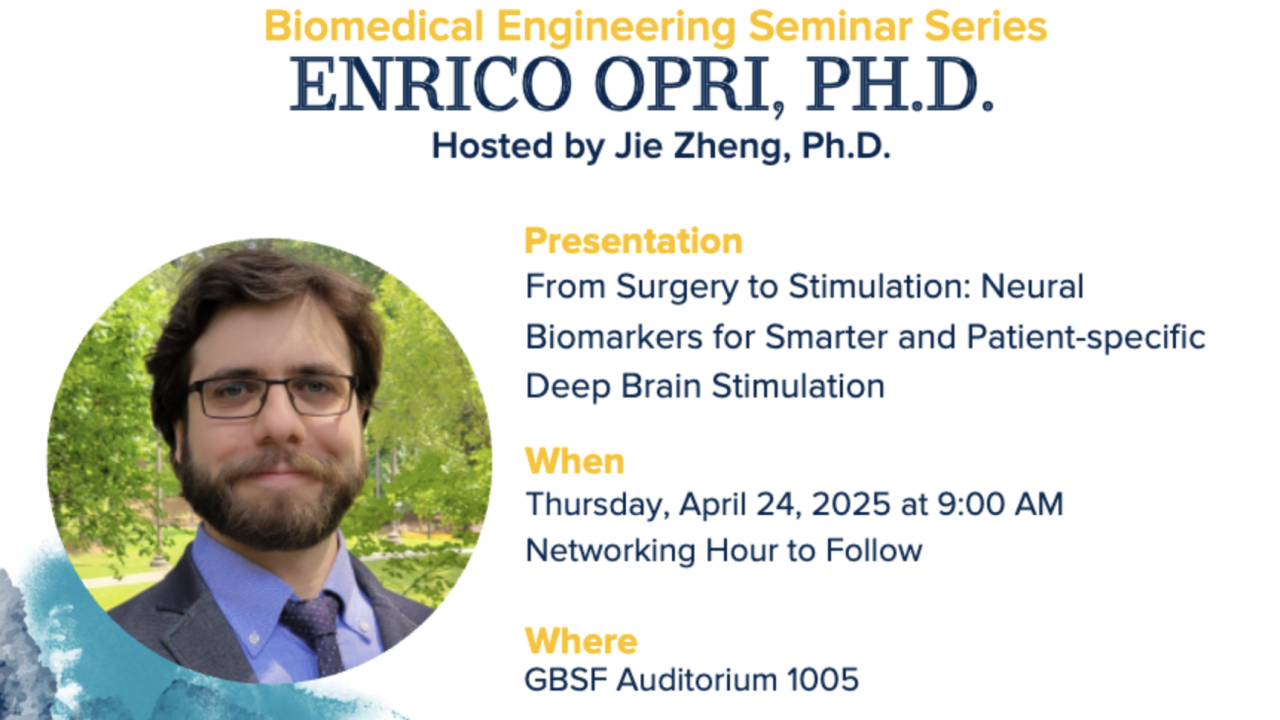
Event Date
Dr. Enrico Opri is an Assistant Professor at University of Michigan within the Department of Biomedical Engineering and Neurology. He is a core faculty at the Biointerfaces Institute and he is affiliated with the Michigan Neuroscience Institute (MNI). His lab focuses on understanding how stimulation can alter neural circuits affected in neurological disorders, with the overall goal to identify neurological markers that can be leveraged to improve and enhance current state of the art therapies within movement disorders. He earned his PhD in Biomedical Engineering at University of Florida and completed his postdoctoral training at Emory University.
Deep brain stimulation (DBS) has become standard therapy for medically refractory patients with Parkinson’s disease (PD), essential tremor (ET), and other neurological disorders. However, both processes rely on subjective patient exams, on expert neurophysiologists to optimize implant trajectory and programming, and on time-consuming trial-and-error approaches. Moreover, conventional DBS systems deliver continuous, open-loop stimulation without adapting to patient behavior or environmental factors.
We sought to address these shortcomings in the essential tremor population, developing and clinically validating the first fully embedded, closed-loop DBS (CL-DBS) system for individuals with ET. Importantly, we achieved an equally effective treatment compared to current DBS approaches while having a more efficient stimulation energy profile. Furthermore, CL-DBS demonstrated potential in decreasing DBS-related side effects (e.g. speech impairments). Additionally, the unique window provided by intraoperative acute recordings, allowed us to further our understanding of the thalamocortical network.
We sought to improve intraoperative DBS implantation for the PD population by leveraging a novel biomarker, DBS local evoked potential (DLEP), which strongly correlates with the location of the typical target-subregions of the nuclei of interest, the subthalamic nucleus (STN) and globus pallidus internus (GPi). Most importantly, the proposed methodology requires no patient interaction and could be leveraged for implementing an objective, real-time guided placement of the DBS lead, potentially streamlining the surgical workflow and improving targeting accuracy compared to traditional mapping procedures.
